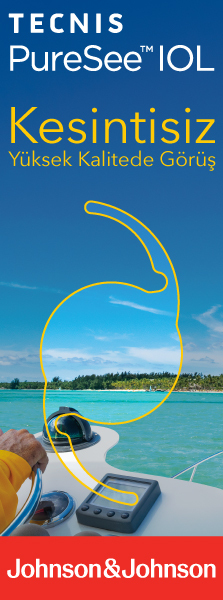2Doç. Dr., Kırıkkale Üniversitesi Tıp Fakültesi, Göz Hastalıkları, Kırıkkale - Türkiye Purpose: We investigated that how glaucoma diagnosis was made, which drops were prescribed and the effects of these drugs on patients who were misdiagnosed as having glaucoma and have been using drops for years.
Materials and Methods: The study was conducted retrospectively among the patients either those admitted for prescription of their antiglaucoma drops or to update their drop reports and the patients who came for glaucoma control. All patients were divided into 3 groups as non-glaucoma, ocular hypertension, and truly glaucoma patients. After routine eye examinations central corneal thickness (CCT) measurements, visual fi eld test and nerve fi ber analyzes were performed. The patients were questioned for the drops and duration they used, the methods used for intraocular pressure (IOP) measurement, whether CCT was measured or not, whether they had been subjected to visual fi eld testing and regular controls. Patients were asked to interrupt their medication and instructed to come 2 weeks later for IOP follow-up.
Results: The glaucoma diagnosis was confi rmed in only 7.1% (8/113) of all the patients. Mean duration of medication use was 3.84 ± 1.24 years. The mean CCT of the patients was 583.51? ± 27.55 in the healthy group, 558.12? ± 36.80 in the group with ocular hypertension and 552? ± 23.10 in the patients with glaucoma. Only 12 (10.6%) of the patients stated that their IOP was measured by applanation tonometry, while the rest were measured with non-contact tonometry.
Conclusion: Misdiagnosis of glaucoma seems to be a common issue in daily practice and glaucoma patients should be re-evaluated especially when the glaucoma criteria are not met clearly.
Keywords : Intraocular pressure, antiglaucomatous drop, glaucoma




